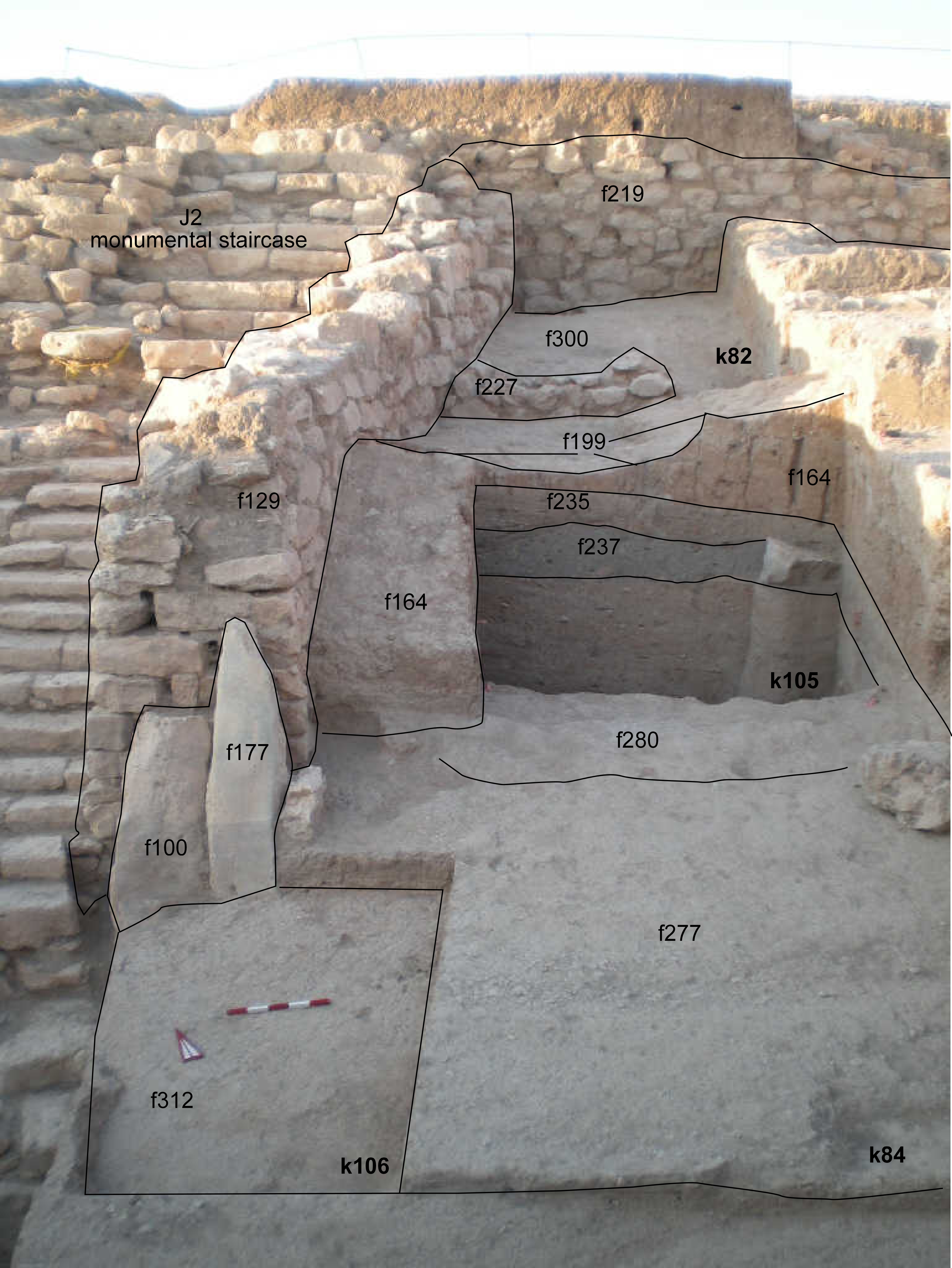Back to top: Emplacement for Unit J6 Horizontal surfaces
Horizontal surfaces
In J6 we encountered several floors. Floors are, by definition, the compaction of soil with components such as pottery sherds and/or pebbles lying in a single plane and generally flat. In some cases the floor has been compacted by people walking by, in other examples we have floors where elements such as pebbles and sherds have been deliberately placed and compacted. Pavements are horizontal built surfaces. In J6 we did not record any pavements. An example of a pavement is the stone pavement of the Palace in A16.
Back to top: Emplacement for Unit J6 Horizontal surfaces
Floors
We recordered several floors related to the use of the area east of the monumental staircase and related to its walls and structures.
1. f239 is a pebble and sherd floor inside the bin a7.
A series of floors were found south and south-east of wall f129 and related to the use of the staircase in J2. Here are the floors:
2. floor 2 (including f140 and f135) was found under a thin accumulation f166 and under glacis 1 (f63) and above glacis 2 (f110). It is a compact and hard surface including many pottery sherds and pebbles laying flat. In the floor we found an animal figurine q237.1 and a bead q238.2. The floor is cut by pit f122. The situation is well visible in t73.
3. f154 is a brown compacted surface with several small pebbles and some sherds. A head of a horse q261.1 and a metal blade q262.2 were found in the floor. The floor was covered by a thick accumulation.
4. f171 is a brown compacted and hard soil, sherds lying flat, abutting the estern betili f177, visible in t114. The floor was covered by an accumulation f170. While exposing the floor we found metal pin i19 and blade i21 .
5. f184 and f271 is the next floor found abutting the betili f177 and f100. The surface was found in all the square k84, is hard and highly compacted fine brown soil with sherds liyng flat and pebbles (concentrated in the western part). The soil contained some seeds and carbon. We found an animal figurine q394.3. The floor overlayied glacis f280, i.e. glacis6.
6. f273, same as f277 is a floor surface found in all k84 in front of the betili, under f171. Many small pebbles and sherds define this floor. The floor overlays glacis f280, i.e. glacis 6 and covers floor f277, visible in v193b
7. f286 is a 3cm thin and hard surface with few sherds and pebbles. It covered a thin accumulation above floor f303.
8. f303 is a hard and compacted thin floor above floor f312.
9. f312 is a reddish orange brown highly compacted floor presenting some lamination on the surface and mud patches, but dameged in surface. The floor is in section about 10cm thick The same floor was excavated in J2 f359
 .
.
Back to top: Emplacement for Unit J6 Horizontal surfaces
Pavements
A pebble and sehrd pavement f239 was found inside the bin a7. The pavement was exposed in unit J4, therefore see f143 for a complete description of the feature.
Back to top: Emplacement for Unit J6 Horizontal surfaces